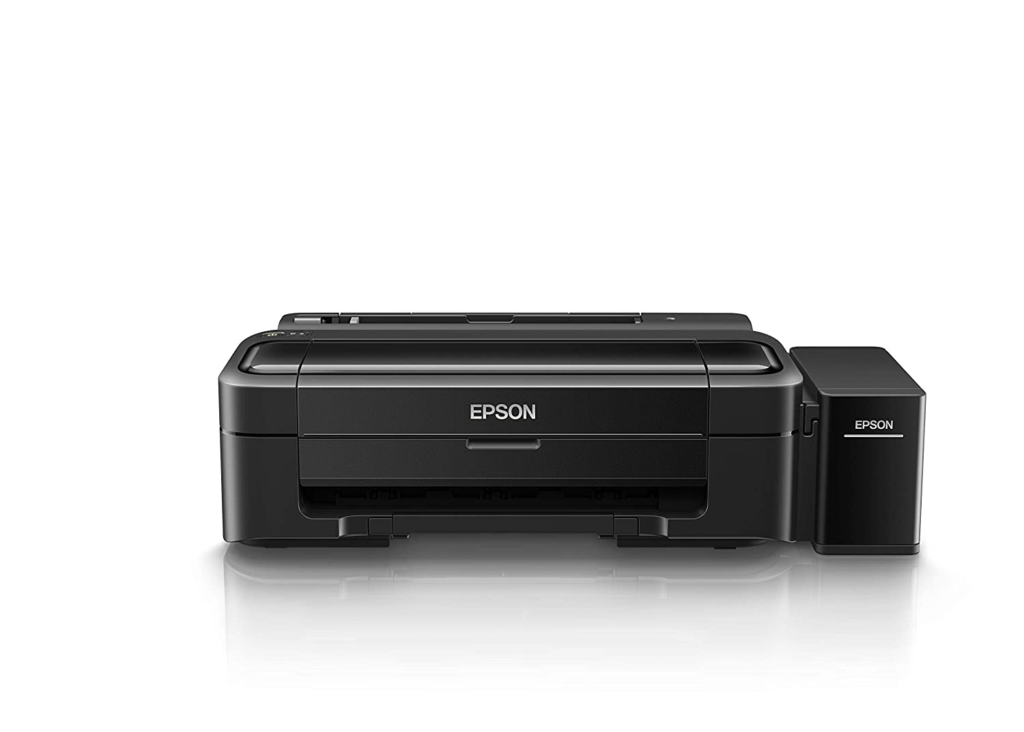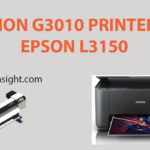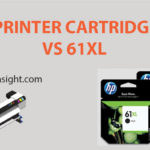Are you torn between a 4 color and 6 color printer?
When selecting the ideal printer for your needs and budget, the process might be complicated due to the abundance of alternatives available on the printer market. Although many printers have a similar appearance, the function makes the difference.
But do not be concerned.
We are here to assist you. In this article, you will learn about the 4 color printer Vs 6 color screen printing with great details. We hope that our advice will be of use in your printer selection.
Let us get started now.
What Is A 4 Color Printer?
The most often used printer for printing full-size color images is a 4 color printer. The 4-Color Method is used by all professional printers to produce multi-colored patterns or photographs.
A 4-Color printer employs four different ink colors. The four primary colors used in this system are cyan, yellow, magenta, and black.
Printing presses use a variety of inks to produce full-color pictures. It is possible to create an extensive range of CMYK colors in various methods.
All four CMYK colors may be used to print in full color for high-quality results.
Canon, HP, Epson, and many other manufacturers produce 4 color printers. 4-Color printers have become much more economical in recent decades. 4 color printers are usually used for personal use.
Pros
- Lightweight
- Portable
- Affordable
- Compact design
- Best for personal use
Cons
- Cannot print every color
- Not suitable for high-resolution images.
- Cannot print RGB files

Best 4 Color Printers
- HP Color Laserjet Pro Multifunction M479fdw Wireless Laser Printer
- Brother MFC-L3750CDW Digital Color All-in-One Printer
- Canon Lasers imageCLASS MF8280cw Printer
What Is A 6 Color Printer
The hexachrome color range of the 6 color printer adds orange and green inks to the four CMYK color choices, giving in a total of six color possibilities. Printing using a more comprehensive range of colors results in more visual details than just four colors.
Pantone Inc. created 6 color printing in 1998 under the name Hexachrome, which included orange and green pigments to the standard (and still popular) CMYK printing setup.
Due to the difficulty in calibrating Hexachrome, many 6-color printers use a CcMmYK method instead. Adding more light cyan and light magenta to the mid-tone area expands this area’s color range. It improves the appearance of blue skies and a variety of skin tones.
In addition to hexachrome, a dark/light version is available, with a softer cyan and magenta tone. This technique can produce more realistic images.
There are two types of additional color choices in 6 color printers.
Hexachrome 6C
Hexachrome printing uses CMYK inks and Green and Orange toner cartridges to produce prints. Additionally, Hexachrome can create more affluent and vibrant images than 4C, with a smaller color gamut.
6C Dark/Light
CMYK inks are combined with lighter colors of cyan (LC) as well as magenta (LM) in six-color electronic color printing to generate images that are more lifelike than those produced with typical 4 color printers.
With a specific color cartridge, you can get a more accurate print than the other 4 color systems combined. According to Mimaki, this 6 color printer can reproduce 94.8 percent of all Pantone colors.
One of the 6 color printer features is the flexibility to exchange two of the additional colors for white or metallic.
Pros
- Can print a wide range of color
- Suitable to use in office
- Suitable to print high-resolution images
- Superb Efficiency
Cons
- Costly
- Heavier than 4 color printer
- Bulky design
- Uses more power

Best 6 Color Printers
- Expression Photo HD XP-15000 Wide-format Printer
- Canon PIXMA G620 Wireless MegaTank Photo All-in-One Printer
4 Color Vs 6 Color Printer: A Side By Side Comparison
In this part, we will provide a quick overview of the specifications of 4 color and 6 color printers. This discussion will provide a bird’s-eye perspective of all of the relevant variables.
| Comparison Factor | 4 color printer | 6 color printer |
|---|---|---|
| Printing Technology | Inkjet, Thermal | Inkjet |
| Connectivity | Wireless, USB | Wireless, USB |
| Black Print Speed Range | 4-9PPM | 12-38PPM |
| Weight | 5.3lb | 12.6lb |
| Rated voltage | AC 100-240 V | AC 220 V-240 V |
| Frequency | 50-60 Hz | 50 Hz – 60 Hz |
| Nozzle | 59 Nozzles per Color | 90 Nozzles per color |
| Print Resolution Range | 300 x 300 to 720 x 720 dpi | 300 x 305 to 760 x 1,440 dpi |
| Minimum Droplet Size | 3pl | 1.5pl |
| OS Platform | Windows, Mac | Windows, Mac |
| Price | Amazon | Amazon |
Let us now get into a more in-depth analysis of these printers. We will share our thoughts on which printer will provide the most bang for your cash. It will assist you in making your purchasing decision. So please bear with us to the very end.
How do you decide between a 4 color printer and a 6 color printer?
Before purchasing a 4-color printer and a 6-color printer, you should thoroughly research this area. When deciding between these two choices, there are many aspects to consider.
Design
In terms of size, both of these printers are standard. In that case, what exactly is the distinction?
Compared to the 6 color printer, the 4 color printer is much less bulky and more compact. In addition to its durable construction, the 6 color printer is appropriate for professional usage.
As a result, if you want to use a printer for personal purposes, the four-color printer is the best option.
Printing Technology
Many printing technologies are available to select from, and new ones are created daily. Since each printing method is suited to a particular purpose, businesses can choose the one that best presents their products or services.
Therefore, how can you tell the difference between the different printing technologies and how to choose one for your use?
Inkjet
When printing at home, inkjet printers are a common choice. In the same way that television and computer displays display pictures via thousands of pixels, best inkjet for home use generate images by accurately blasting thousands of tiny ink droplets onto paper.
Each of the three ink colors is referred to as a “cartridge” in the industry. Using these three fundamental colors, the printer may create any other hues required for the print project.
A print head, which rotates back and forth in response to the paper being fed through the rollers, accurately sprays ink onto the paper. Smearing is more likely to occur than laser printing, as easy as this method is. It is also common to use them to create labels.
Both a 4-color and a 6-color printer make use of inkjet printing. Compared to other printing methods, inkjet printing is more cost-effective and does not compromise quality.
Thermal
A thermal printer uses heat to transmit the image onto the paper, making it a thermal printer.
Due to improvements in print speed and quality, it is now more widely used by a wider variety of companies. Aviation and banking are the two areas where it is most often used.
Because thermal printing doesn’t use ink or toner, but instead depends mainly upon thermal plates to generate the images, it is similar to other printing technologies. Making labels with them is also extremely common, owing to their speedy printing capabilities.
When compared to other technologies, a thermal printer is more complex. It raises the printer’s cost. Because of this, it is less common. 4 color printers occasionally use thermal printing as a printing method.
Laser
Laser printers print text and pictures on paper by directing a concentrated beam of light onto the paper. Despite what many people believe, the laser somehow doesn’t indeed burn the images into the sheet as is often thought.
When it comes to printing speed, laser printers beat inkjet printers hands down since they don’t utilize ink and hence do not suffer from picture blurring issues. When it comes to printing costs, inkjet, as well as laser printers, are almost identical.
Because of this, corporations choose laser printers, whereas consumers prefer inkjet printers. Common laser printer resolutions are 600 dpi resolution or greater.
Printing quality
The grade of a printer’s printout is referred to as its “print quality.” A wide range of variables contributes to the final grade. What kind of paper you are using and what kind of ink/toner you are using are two of the most important factors to consider while printing.
DPI is a common metric for assessing printability, and it shares many similarities with the notion of pixels used in digital pictures and even on screens. If the DPI of a printer is lower than the source picture, the final picture becomes a down-scaled replica of the main picture’s resolution.
The color gamut of a 6-color printer is more comprehensive than that of a 4-color printer. A 4-color printer can produce 720 x 720 dpi, whereas a 6-color printer can produce more than 5,760 x 1,440 dpi. It has a considerable impact on the final picture’s quality.
High DPI from 6 color inkjet printers is not necessary if you are not a professional. It is used mainly by businesses.
Colors
The 4 color system is well-understood by the majority of people. 4 sublimation color printers use CMYK as their primary colors.
The 6 color printer uses hexachrome inks, in addition to the standard CMYK palette. You can get richer, more colorful prints by using a broader range of colors in your printing process.
Additionally, there is an option for the hexachrome version that contains darker tones of cyan and magenta. The best 6 color printer generates more realistic pictures.
4 ink cartridges are used for a 4 color printer. However, a 6 color printer requires six ink cartridges, making the printer heavier and sturdy.
Printing Speed
Print speed refers to the estimated time it will take your printer to make a single print. Printing speed is dependent on document type (text or graphics), cartridge type (black or color), printability, and sheet type. Text documents produced in “grayscale” will print more quickly than high-quality full-color images.
When printing black, a 4 color printer can produce 9 pages per minute. At the same time, color printing may take up to 4.9 pages per minute. Color printing is much more time-consuming than printing in grayscale.
The 6-color printer can print 12 pages per minute in color, and 16 pages per minute in grayscale or black printing.
Portability
The average weight of a 4 color printer is 5.3 pounds. This portable photo printer is small enough to fit in your car or bag. Generally speaking, this sort of printer is utilized for personal purposes.
12-pound on average, a 6-color printer is constructed to be durable and heavy. It is primarily used in workplaces or commercial establishments. It is not a transportable device.
Cost
The CMYK 6 color printers are more expensive than 4 color printers. When you print high-quality photographs with a greater number of colors, the additional expense is justified.
Tips
- Do not use a 4 color printer to print high-resolution images.
- When purchasing a printer for an office or company, choose a 6 color printer.
- Before purchasing one of these printers, consider your options and financial situation.
Frequently Asked Questions
1. What affects print color quality?
Multiple factors, such as inkjet or color laser printers, impact the final product that comes out of the printer when printing from one.
Your printer’s physical properties, the kind of paper you use, the model of printer you use, your print parameters either in software, and the quality of the digital file you are printing all come into play when you print anything.
Most inkjet printers can print well if all of the nozzles in the printer are firing correctly. Wrong print settings in the software and choosing the wrong paper type for the printer’s inks are the most common causes of subpar images.
When printing with a color laser printer, the kind and condition of the paper may have a significant impact.
If your printer has a large paper tray, please remember that the moisture level of the paper fluctuates with the surrounding environment. Depending on the amount of moisture in the sheet, a mottled area of flat solid color may be formed.
2. Can 4-Color Process Printing create every Color Imaginable?
No. Colors from the Pantone Matching System (PMS) are used to create a particular shade of color. This color is one of the colors which can be reproduced accurately using the 4-Color Process.
PMS colors are created using specific color formulas and then printed with pinpoint precision. According to PMS, ink colors are generally pre-mixed based on existing color formulas and assigned a particular number. The CMYK 4-Color printer ink colors are created by stacking multiple ink colors.
PMS colors are widely utilized in situations when colors cannot be recreated by layering the four colors, despite the fact that employing PMS colors is more expensive.
3. What to do if the color printer only prints black?
You may have a color printer but only get a monochrome image when printing. If this is the case, you may attempt the below steps to resolve the issue:
- 1. Ensure that your color cartridge is not filled or obstructed
The possibility of this issue is the root cause that should not be overlooked. Most color printer drivers have tools to check for misalignment and color output.
Please refer to your printer’s manual or launch the printer driver by pressing the Start button.
The following are the configurations: Printers, and then right-click on the icon for your printer and choose Properties. Find settings that run system checks in the Properties dialogue box by browsing through it.
- 2. Look for the following setting
Open the Properties dialogue box for your printer software and seek a color choice that only prints in black. Disable it or choose a program that allows for the use of color.
Some color printers have different color and black-and-white printing resolutions, which might be confusing.
Some programs compel a printer to utilize a quality setting that disables color output.
- 3. Activate the use of grayscale printing
A misunderstanding between the printer driver installation and the system software can occur when certain printers and os editions are used together.
- 4. Can metallic ink be printed out of a 4-color process?
No, since gold, silver, and bronze must be printed as solid colors, they cannot be used as accents. This allows the addition of white, transparent, silver, and gold specialized dry inks to the standard CMYK color palette. Over six linear dry ink stations are available on the modern generation of printers.
Final Words
Everything you need to know about 4 color printer Vs 6 color is included in this guide. We hope you have gained an understanding of the benefits and drawbacks of these printers, as well as their specifications.
We made every effort to clarify everything in straightforward language. We hope you will find this content useful. Finally, it is time to put your newfound knowledge to use. Best of luck.




